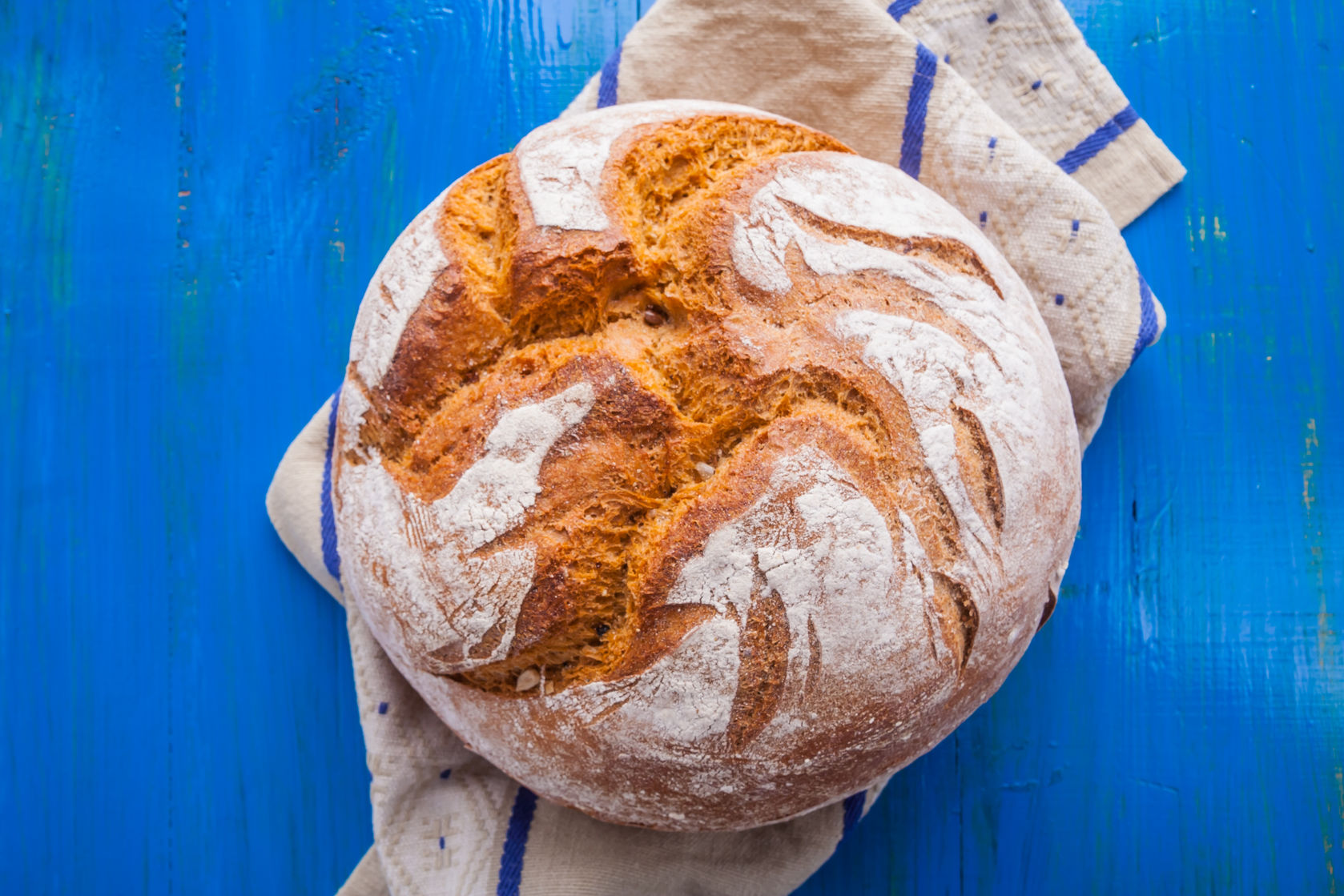 Eat Empowered
Eat Empowered  Healthy Shopping
Healthy Shopping  Sugar
Sugar  Weight Loss
Weight Loss
Cereal Brands Are Reducing Sugar—All You Need To Know
By Karla WalshHome » Eat Empowered » Sugar » Cereal Brands Are Reducing Sugar—All You Need To Know
File this under “sweet news” for those who are trying to limit added sugars in their diets: Many of the largest cereal manufacturers have attempted to upgrade their recipes to keep all the flavor but reduce the sugar content.
Likely spurred on by a combo of the new nutrition labels (that now prominently list the grams of added sugars) and an overall increase in interest in more wholesome breakfast options, brands like General Mills, Kellogg Co. and Post Foods are reformulating some popular products to be lower in sugar.
Here’s what we know and why this matters.
RELATED: How to Satisfy Your Sweet Tooth Without Added Sugar
How Much Sugar Do We Eat?
The human body needs zero added sugars to survive. Our diets include natural sugars already, such as those found in fruit and dairy products, which will always earn our stamp of approval. Added sugars, however, should be thought of as a treat rather than a habit; an exception, rather than a rule.
The new 2020-2025 Dietary Guidelines for Americans recommends that added sugars should be no more than 10 percent of total daily calories. This is equal to about 12 teaspoons of sugar. The World Health Organization, however, recommends less than 5 percent of total daily calories from added sugar, which is about 6 teaspoons of sugar.
To translate this into nutrition label terms, 4 grams of sugar is equivalent to 1 teaspoon, so a serving of food with 10 grams of sugar has a little less than 2 ½ teaspoons. (Find out more about how much sugar you can eat in a day here, according to several health organizations.)
So how do we stack up at the moment? The CDC says that the average American consumes around 82 grams (AKA 19 ½ teaspoons) per day, about three times the WHO’s limit and more than 50 percent more than the Dietary Guidelines suggest. Most of these come from sugar-sweetened drinks, snacks and sweets—all foods that don’t often come packed with many other micronutrients or health-boosting qualities.
How Cereal Stacks Up
Unlike candy and soda, cereal does come with some nutritious elements. Cereal is the number one source of whole grain, fiber, vitamin E, vitamin A, vitamin B12, vitamin B6, thiamine, folic acid, riboflavin, niacin, iron and zinc (whew!) for all Americans at breakfast, according to CDC data, and the Dietary Guidelines do say that while most cereals include at least a small amount of added sugars, whole grain cereals can be part of a well-balanced, healthful diet if total daily sugar intake stays below 10 percent of calories. (Again, you can get all the nutrients you need from whole foods with natural sugars and do not need any added sugars at all.)
Ready-to-eat cereals are the most popular breakfast food in the U.S., and you can find at least one box in about 90 percent of homes.
RELATED: How to Cut Sugar Out of Your Diet (For Real This Time)
What’s New in the Cereal Aisle
General Mills, for one, reports that they have steadily reduced the sugar in the foods they produce for the last 10 years. In kid-friendly cereals, for example, they’ve slashed about 16 percent of sugar content since 2007 and have trimmed all of their Big G kids cereals to less than 10 grams of sugar per serving. One way they’ve done so? By shifting some of the sugar inside the pieces into a smaller amount in the coating, which makes it still taste sweet since there is still sugar hitting the taste buds.
General Mills also published a patent in 2017, to reduce the sugar in those coatings we mentioned, without changing their texture or appearance. The technique involves swapping the sugar or corn syrup for maltotriose and maltotetraose*, higher-intensity sweeteners. They estimated that this simple trade, over time, could lead to reducing the sugar content by 30 percent or more.
Kellogg Co. and Post Foods have been trying to decrease the sugar and increase the vitamin D or fiber in some of their products, such as Fruity Pebbles, Cocoa Pebbles, Honeycomb, Froot Loops, Apple Jacks and Corn Pops. But, let’s call it what it is, these are still sugar cereals.
Several brands are using cinnamon and vanilla—already common flavors in many recipes—to enhance the sensation of sweetness without any actual sugar. (This same trick works wonderfully in coffee, oatmeal, pancake and waffle batter and other homemade recipes, by the way.)
It’s tough to say how the pandemic’s cereal boom and the increased interest in nostalgic snacks and comfort food will impact these changes, if at all, but it appears many cereal manufacturers are at least attempting to make sweet strides.
This is not exactly an easy or quick process, though, since sugar does more than lend sweetness to a cereal. It also:
- Helps absorb moisture as the pieces bake so the texture remains crunchier longer even after the application of milk
- Aids in binding the ingredients together
- Offers a golden or brown hue
- Acts as a preservative to extend the shelf life
*More research is needed to determine if or how the body processes these new sweeteners compared to sugar, so it’s important to proceed with caution when consuming these for the time being.
Low-Sugar Cereals to Add to Your Shopping List
Oatmeal, eggs and breakfast salads will always be solid a.m. options to kickstart your day in a healthful way. But when you’re crunched for time or feeding a family of picky eaters, we realize that—even processed cold cereals—may need to be part of one’s diet.
The cereal industry continues to evolve. As it does, be sure to keep a keen eye on the nutrition label (not just on sugar, but on all ingredients). Here are some ready-to-eat cereals with less than 8 grams of sugar (less than ⅓ of the WHO recommendation):
- Mom’s Best Toasted Wheatfuls Cereal: 0 grams total sugar, 0 grams added sugar ($3.29 for a 24-ounce box, Instacart)
- Arrowhead Mills Puffed Corn Cereal: 0 grams total sugar, 0 grams added sugar ($1.80 for a 6-ounce bag,Swanson Vitamins)
- Forager Organic Grain-Free Os: 4 grams total sugar, 3 grams added sugar ($4.99 for a 7 ½-ounce box, Thrive Market)
- Alpen No Sugar Added Muesli: 6 grams total sugar, 0 grams added sugar ($31.99 for six 14-ounce boxes, Amazon)
- Cheerios: 2 grams total sugar, 2 grams added sugar ($3.79 for an 18-ounce box, Target)
(photo credit: Shutterstock)
Health, Food, Wine and Relationship Writer + Cooking and Wine Event Host
RECENT ARTICLES

Want a sneak peek inside the program?
Get FREE access to some of the core training materials that make up our signature program – Become a Nutrition Coach.
Get Access"*" indicates required fields














































































































































































































































































































































































































































































































































































































































































































































































































































































































































































































































































































































































































































































































































































































































